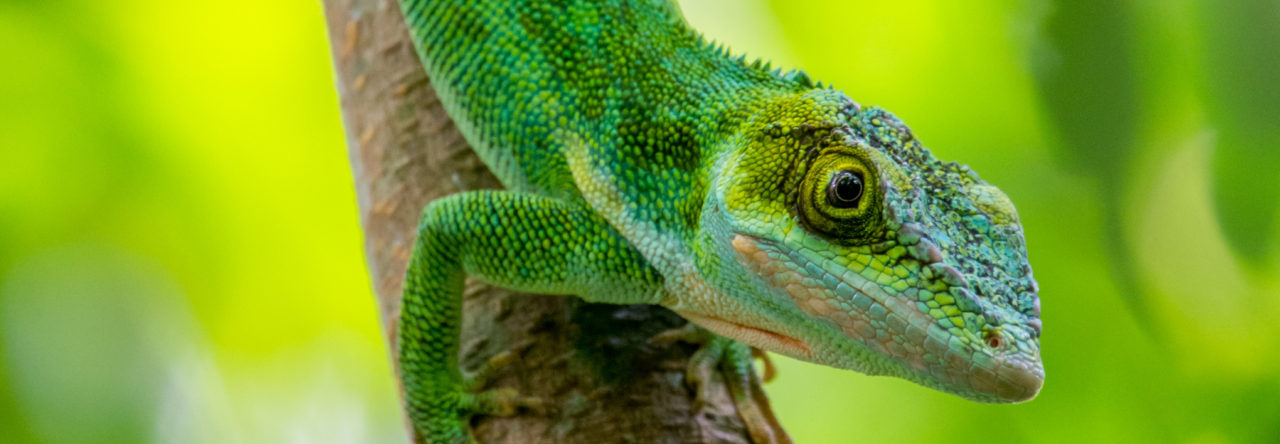As part of its ongoing studies of Central and South American anoles, Team Mainland—fresh off successful field work in Colombia and Venezuela earlier this year, traveled to the Veracruz, Mexico to sample that state’s anole fauna. Joined by Anne-Claire Fabre, Victor Jiménez, and Ramón Martínez, Team Mainland worked at the fabled Estación de Biología Tropical Los Tuxtlas, home to eight or nine (depending on which paper you read) species of anoles. The goal of the trip was to characterize the ecology, behavior, and morphology of the species residing at the station. Although all anoles are interesting in their own right, as we know, not all anoles are created equal. And, indeed, there was one special species we had our heart set on seeing: the large aquatic anole, Anolis barkeri.
And lo and behold, we saw them! Aided by Bob Powell’s advice to visit his old field site, a lovely stream located several kilometers from the station, we spent several days observing the antics of these gorgeous anoles, the largest of the mainland aquatics. And by antics, I mean primarily sitting around doing nothing, though they did flash their gorgeous red dewlaps occasionally (alas, not caught by camera, but several times on video—stay tuned once they get processed). Actually, they were sometimes quite active, running rapidly from one place to another. Like other mainland aquatics, these guys hang out right next to streams, and when threatened will sometimes jump in. They don’t go swimming away, though, at least not in our observations (which agree with others); rather, they immediately go to the nearest water-land interface and hang out, hoping they have not been detected.
Our trip occurred in early August, at the end of both the reproductive and dry seasons. We were told that it had been a particularly dry dry season, which may explain some of the observations. For example, A lemurins is supposed to be very common, but we didn’t see a one. Also, males of two other common species, A. sericeus and A. rodriguezi, were few and far between. This was surprising, but perhaps these—like many mainland species—are primarily annual, that is, with a lifespan averaging less than a year. Perhaps the males, spent by their exertion, are all dead, explaining why we saw so few of them. That was a classic hypothesis borne of field observations, but the Malice of Nature did not intervene to refute it. A number of people suggested that A. barkeri is only found in shaded streams; in the open, it is pushed out by basilisks. “Find a basilisk,” we were told, “and you won’t find A. barkeri.” For the record, we did find several small basilisks along the stream, though only in open, sunny spots in the otherwise well-shaded watercourse. The A. barkeri were found on logs and rocks, always near the water. They didn’t impress me as brilliant swimmers, but could immediately climb onto rocks—very good graspers, with long arms and sharp claws.
I was particularly curious to learn more about A. sericeus.














